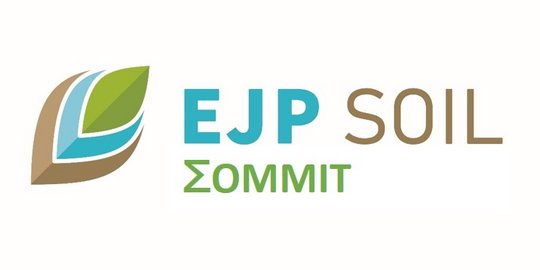∑OMMIT
| Start: | 1 February 2021 |
| Duration: | 36 months |
| Aim: | Sustainable Management of soil Organic Matter to Mitigate Trade-offs between C sequestration and nitrous oxide, methane and nitrate losses . |
| Contact: | Project coordinator: Dr. Alessandra Lagomarsino (alessandra.lagomarsino@crea.gov.it) Project Co-coordinator: Eugenio Díaz-Pinés (eugenio.diaz-pines@boku.ac.at) Project communication representative: Dr. Felipe Bastida (fbastida@cebas.csic.es), and Jose Luis Moreno (jlmoreno@cebas.csic.es) |

This video includes content related to the field work in different partners, as well as methods in the lab. SOMMIT project is evaluating gas fluxes and microbial parameters in soils from LTE under different organic management.
∑OMMIT OPEN DAYS:
-
Italy: 9 May 2024 will be held in Rome. Click here for programme in Italien.
-
Austria: 13 March will be held at AGES https://akademie.ages.at/carbon_farming__wofuer_und_fuer_wen/programm.html
- 250 people registered
-
Slovenia: April - to be further announced
-
Italy: May - to be further announced
The SOMMIT project will evaluate trade-offs and synergies between soil C sequestration, nitrous oxide, methane and nitrate losses as affected by soil management options aimed at increasing soil C storage.
The integrated and interdisciplinary approach will address the main pedo-climatic conditions and farming systems in Europe, through:
- Synthesis and meta-analysis of available literature and data;
- Targeted, novel measurements on key long-term experiments; and
- Simulation of long-term agro-ecological system responses to contrasting management options.
Moreover, obtained data will be synthesized through a fuzzy-expert system which will allow for:
- Evidence-based identification of optimal strategies for mitigation of trade-offs, and
- Effective stakeholders’ involvement.
Project leader and partners
Project leader:
CREA (Consiglio per la ricerca in agricoltura e l’analisi dell’economia agraria), Italy
Responsible person from organization: Alessandra Lagomarsino
Project partners:
INRAE (French National Research Institute for Agriculture, Food and Environment), France
Responsible person from organization: Frida Keuper
ILVO-EV (Research Institute for Agriculture, Fisheries and Food), Belgium
Responsible person from organization: Peter Maenhout
LUKE (Natural Resources Institute Finland), Finland
Responsible person from organization: Elena Valkama
NIBIO (Norwegian Institute for Bioeconomy Research), Norway
Responsible person from organization: Adam O’Toole
IUNG-PIB (Institute of Soil Science and Plant Cultivation – State Research Institute), Poland
Responsible person from organization: Alina Syp
ULBF (University of Ljubljana, Biotechnical Faculty), Slovenia
Responsible person from organization: Rok Mihelič
BOKU (University of Natural Resources and Life Sciences), Austria
Responsible person from organization: Eugenio Díaz-Pinés
AGES (Österreichische Agentur für Gesundheit und Ernährungssicherheit), Austria
Responsible person from organization: Taru Sandén
ISPRA (Italian Institute for Environmental Protection and Research), Italy
Responsible person from organization: Marina Vitullo
AIS (Agricultural Institute of Slovenia), Slovenia
Responsible person from organization: Borut Vrščaj
UM-FKBV (University of Maribor, Faculty of Agriculture and Life Sciences), Slovenia
Responsible person from organization: Denis Stajnko
CSIC (Consejo Superior de Investigaciones Científicas), Spain
Responsible person from organization: Felipe Bastida
Responsible person from organization: Annamaria Bevivino
Call text: CM8
Evaluating soil management options for specific objectives: Trade-offs between soil organic carbon sequestration and greenhouse gas emissions and/or N and P losses
Rationale
Storing more C in soils may lead to adverse effects on the climate and on the environment, by increasing other GHG emissions (N2O, CH4) and by affecting water quality (nitrate leaching). Soil management strategies for C sequestration focus on increased input of organic matter (crop residues, cover crops, green manure, biochar etc.) or decreased turnover of soil organic matter via either increased stabilization of SOC in mineral soils (manipulation of soil microbiome and soil biology to increase formation of stabilized SOC, quality of organic matter inputs, spatio-temporal distribution of inputs) or by reducing the conditions for SOC turnover (e.g. increased groundwater table in previously cultivated and drained peatlands and organic soils). Many of these strategies have significant implications for emissions of methane and nitrous oxide, i.e. rewetting of peatlands may greatly enhance methane emissions and adding N-rich crop residues may enhance nitrous oxide emissions and nitrate leaching.
Scope
The project will analyse the potential trade-offs for major pedo-climatic zones and farming systems in Europe. The project will gather knowledge from past and current EU activities on quantifying the trade-offs and synergies, initiate and perform targeted measurements and modelling activities to fill in significant knowledge gaps, and synthesize knowledge into proposed robust indicators to predict trade-offs and synergies, as well as measures to mitigate trade-offs.
Output/Expected impact
Robust indicators to predict trade-offs and synergies, as well as measures to mitigate trade-offs.
Project type
Two medium size projects (2x150 PM), considering the specificities of organic versus mineral soils or contrasted climate conditions in Europe.
Available funding: 2*1.73 M€
Articles about results from SOMMIT:
- Tadiello, T., Acutis, M., Perego, A., Schillaci, C., & Valkama, E. 2023. Soil organic carbon under conservation agriculture in Mediterranean and humid subtropical climates: Global meta-analysis. European Journal of Soil Science, 74(1), e13338.
